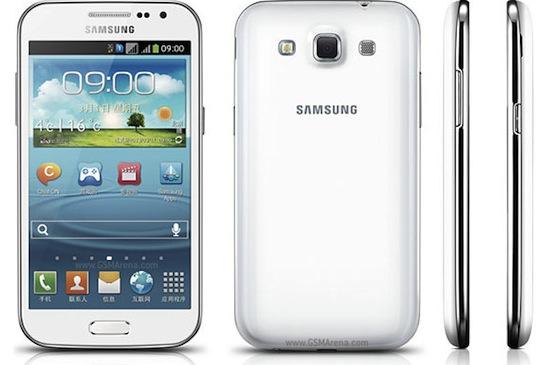
Since Samsung made the first Galaxy S device, one could safely assume they were serious about their smartphones. The phone packed very solid specifications at the time, and even landed on all major carriers in one variety or another, something only the iPhone had managed at the time. Since 2010, Samsung has sold an astounding 24 million units of the original Galaxy S smartphone.
Usher the clock forward three years and the Korean handset's goal in the mobile market is largely the same but more widespread. In one hand, it's clear that they're looking to sell as many smartphones as possible under the Galaxy moniker. It's understandable given how identifiable the brand has become.
In the past month, Samsung has launched multiple smartphones in varying sizes for a handful of markets, each carrying the Galaxy name brand. It's business as usual. Each have the same unmistakable Samsung home, menu, and back button. Each have a slight variation in specifications, with the most notable change being screen size. Each have the same plastic design cues - the rounded edges, curved back, and similar trim.
And this is where Samsung is beginning to lose me. Now, I understand the Korean tech giant has more to gain from emerging markets and can't focus on high end devices for the entire world. That's what makes the U.S. market unique, and it's also why the Galaxy S III, Galaxy Note II, and future S 4 and Note III are assured success stories. But would it be that hard to make a device that doesn't go half way up the hill and then coast down it? In other words, is there a device Samsung can make that isn't a clear predecessor or carbon copy of another device they're already made? Is it too much to ask for a smartphone to be completely redesigned like the HTC One?

Asking this question has landed me at the brand new, super mid-range Samsung Galaxy Win. With a 4.7 inch 480x800 Super AMOLED display, a 1.2GHz Quad-Core Snapdragon 200 CPU, and Android 4.1.2 Jelly Bean, it's a real kicker for any market other than the States. Samsung is clearly aiming this device for a market that isn't looking for the best smartphone, but rather for an individual looking for a smartphone. Period. It makes sense, but the laziness in design is agonizing.
So, before you run out and buy it, I am needing to know the difference between this device and any other high end smartphone they make. It's clear the device packs different internals. With that said, it's very similar in shape to the Galaxy S III, one of their flagship devices. In a sense, the dual-SIM capability gives it an upper-hand in new markets. It's clear that they're looking to saturate multiple markets by "recycling" shapes and designs for cost savings. But it's beginning to get old. As far as design is concerned, I'm not expecting the Korean company to reinvent the wheel when the wheel has rolled in over $7.5 billion in profits, and upwards of 400 million total smartphones sold. I'm just looking for an explanation as to how much longer Samsung can rehash the same device until consumers have no reason to upgrade to any future Galaxy Note V, or Galaxy S 6 because they already have an identical device.
Each mid-range Samsung device may differentiate by specifications which makes sense for individuals and their market. Whether Samsung is gunning for buyers by price point, mobile carrier, or screen size, Samsung is on the verge of making every other smartphone maker look lazy by making so very many variations of smartphones. But are they going for total market domination via screen size? Or is it for a more simple reason, like easy manufacturing techniques?
In short, Samsung is clearly riding the wave of the Galaxy brand's success with similar designs and specifications. But how much longer can they rehash the same design? Is Samsung getting lazy with design?
Images via GSMArena and Phonearena.